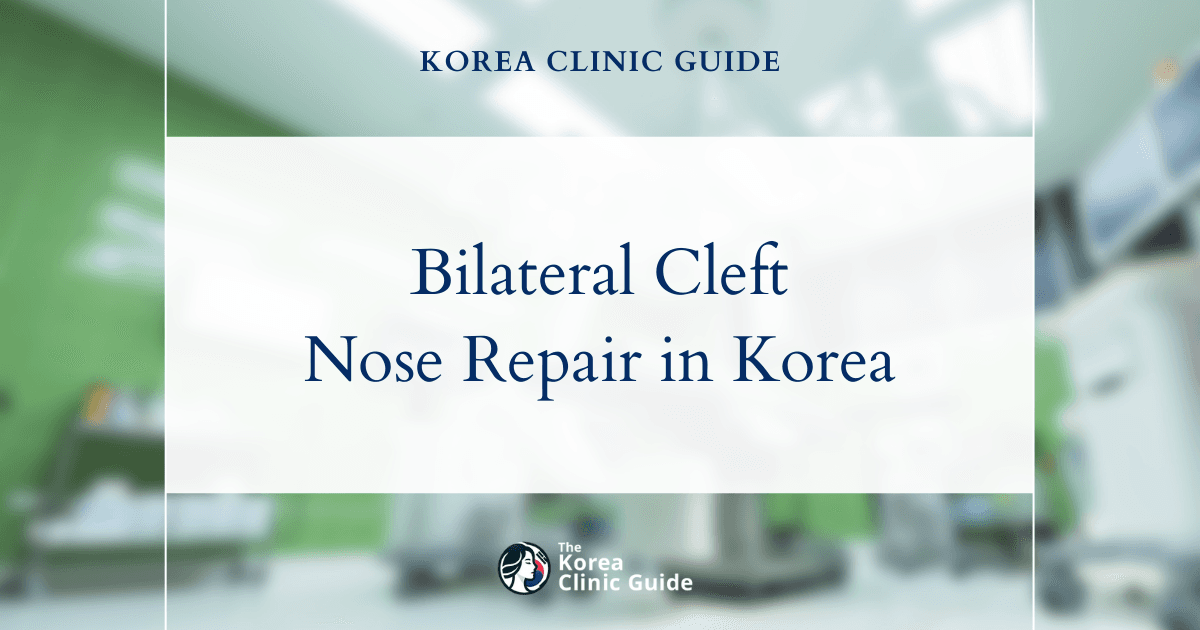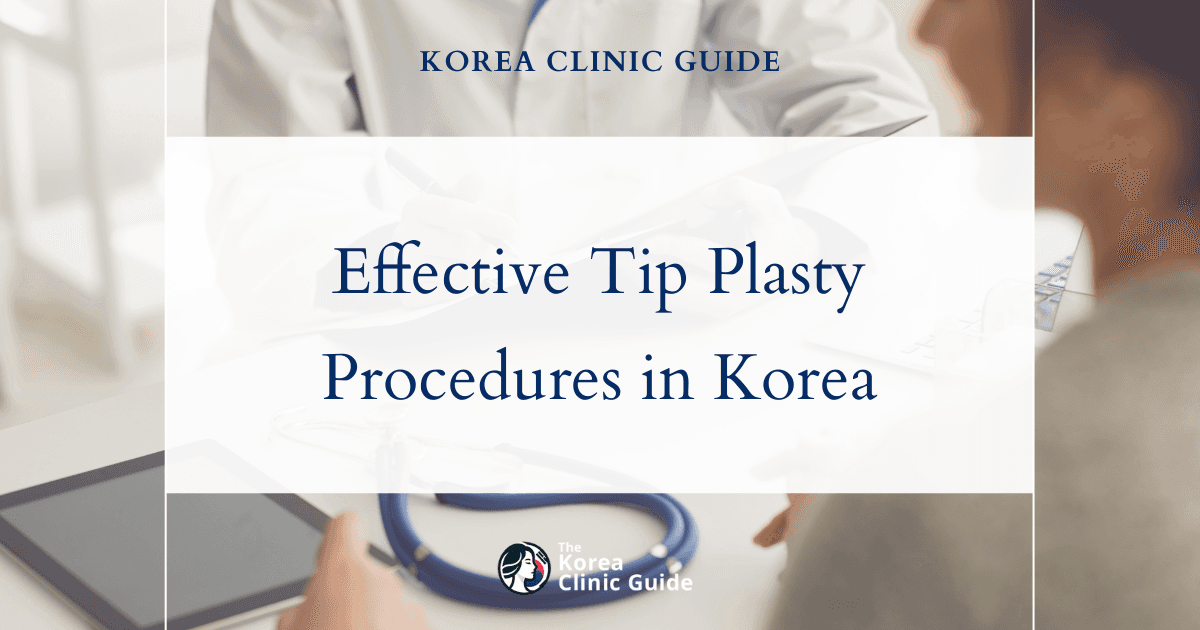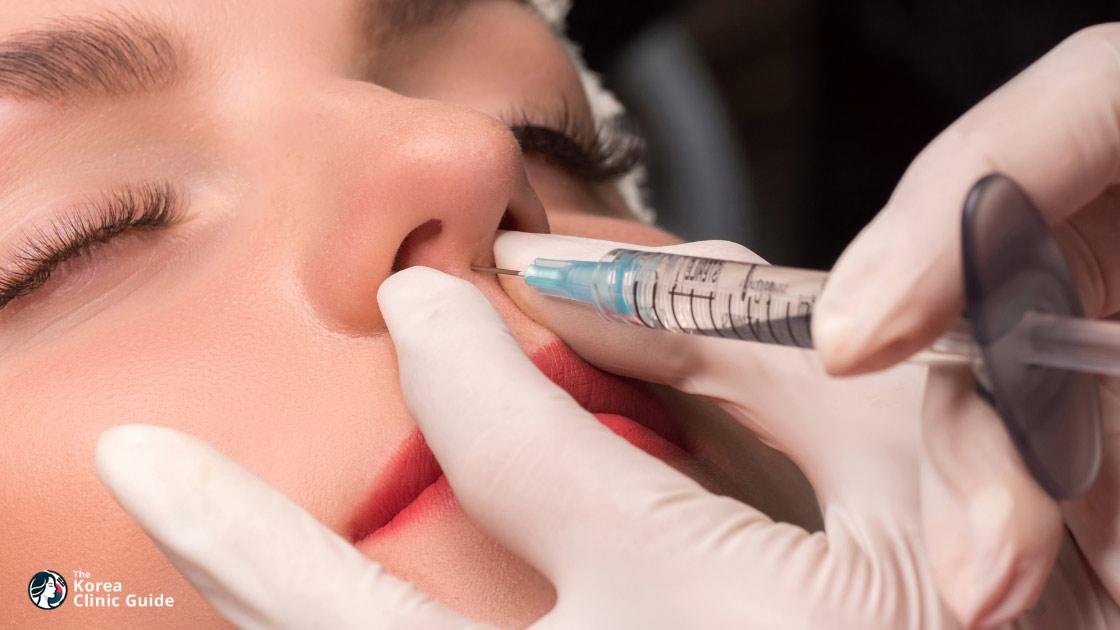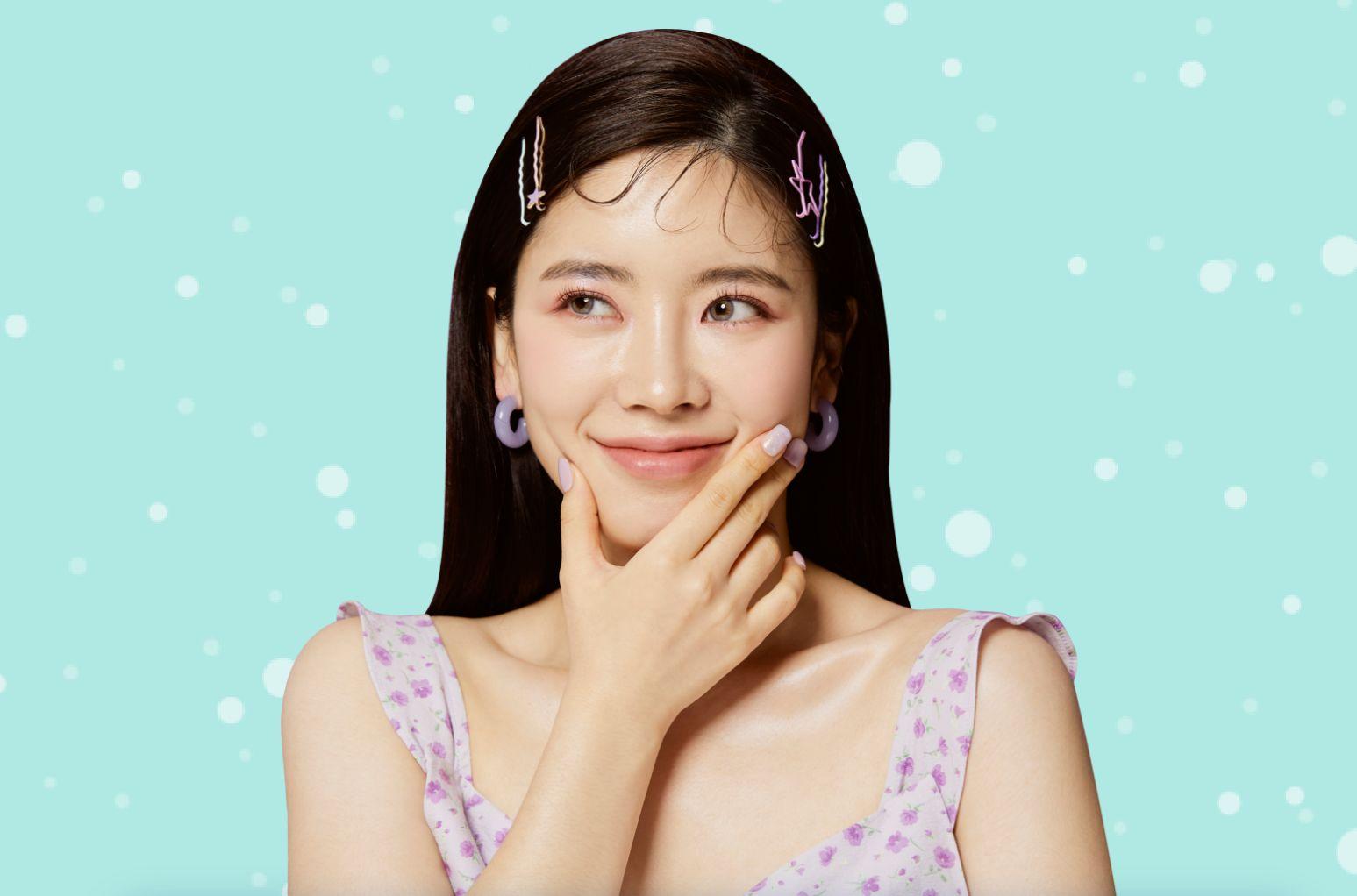Medical Tourism Blog
Alar Reduction in Korea: Fixing Nostril Flaring When Smiling

Table of contents
- Alar Reduction: A Detailed Medical Procedure
- Best Clinics in Korea
- Navigating Alar Reduction as a Medical Tourist in South Korea
- Costs Associated with Alar Reduction in South Korea and Global Comparison
- Patient Experiences and Outcomes with Alar Reduction for Dynamic Flaring
- Conclusions
- References
This report dives into the common issue of "nostril flaring when smiling," also known as "dynamic flaring of nostrils," and highlights Alar Reduction as a key surgical solution. It also serves as a detailed guide for patients considering this procedure as medical tourists in South Korea, covering the surgery itself, costs, and patient outcomes.
Dynamic nostril flaring when smiling is a natural facial movement but can affect self-confidence for some. Here, we explain what it is, the muscles involved, how to tell it apart from medical concerns, and non-surgical options.

What is Nostril Flaring When Smiling?
Nostril flaring when smiling means the nostrils temporarily widen or expand outward during expressions like smiling. This is a normal muscle function and usually doesn’t change the nose’s resting shape. It varies naturally due to nasal cartilage, skin thickness, and ethnicity. Still, some people find the wider nostrils cosmetically bothersome, impacting their confidence.
Common Pseudonyms and Related Terms
This condition is often called "dynamic flaring of nostrils." Other terms include "flared nostrils," "wide nostrils," or "excessive nostril flare." The surgical fix is known as "Alar Reduction," "Alarplasty," or "Alar Base Reduction."
Muscles Involved in Dynamic Flaring
Several facial muscles work together to cause nostril flaring during smiling:
- Levator labii superioris alaeque nasi: Lifts the upper lip and nostril side, causing flare.
- Nasalis: Dilates nostrils during deep breaths or emotional expressions.
- Orbicularis oris and Zygomaticus major: Raise mouth corners for a smile and can pull nasal tissues, affecting nostril appearance.
The extent of flaring depends on nose structure, muscle strength, genetics, and tissue elasticity.
Non-Cosmetic Causes of Nasal Flaring and When to Seek Medical Attention
It’s important to distinguish cosmetic nostril flaring from nasal flaring caused by medical issues. True nasal flaring, especially during breathing, can signal respiratory distress, particularly in children. Unlike dynamic flaring when smiling, which is harmless, medical nasal flaring requires urgent care.
Medical causes include:
- Bacterial and viral infections: Influenza, pneumonia, bronchiolitis.
- Asthma: Often with wheezing and shortness of breath.
- Epiglottitis: Inflammation of tissue covering the trachea.
- Airway obstructions: Blockages restricting airflow.
- Croup: Larynx and trachea inflammation in children.
- Chronic nasal congestion or sinusitis
- Trauma or injury: Broken nose or past injuries.
- Habitual mouth breathing: Compensatory nostril widening.
Seek emergency care if a child shows persistent flaring or if anyone has blue lips, skin, or nails, signs of low oxygen. Cosmetic consultations should also screen for underlying respiratory problems.
Non-Surgical Approaches to Managing Nostril Flaring
For those focused on cosmetic concerns, several temporary or non-invasive options exist before surgery:
- Injections (e.g., Botox): Temporarily reduce muscle activity causing flare; effects last 3-6 months.
- Contouring with Makeup: Use shading to visually minimize nostril prominence.
- Facial Exercises: Techniques like "Nose Flare Control Exercise" and "Press-and-Tighten Technique" may improve muscle tone.
- Nasal Strips: Help with breathing-related flaring by improving airflow.
- Relaxation Techniques: Reducing facial tension can lessen flare.
Consult a professional to understand each option’s benefits and limits. Addressing cosmetic concerns respectfully supports patient confidence and informed choices.
Alar Reduction: A Detailed Medical Procedure
Alar Reduction is a surgical method to reshape and narrow the nostrils. This section covers who it’s for, how it’s done, risks, and recovery.
What is Alar Reduction (Alarplasty/Alar Base Reduction)?
Alar Reduction, also called alarplasty or alar base reduction, targets the nostril’s outer edges (alae) made of cartilage and soft tissue. The goal is to narrow the nostrils and nasal base, reducing flare and creating a balanced, symmetrical nose that fits the face. It can be done alone or as part of a full rhinoplasty.
Who is a Candidate for Alar Reduction?
Ideal candidates feel their nostrils are too wide, flared, or uneven. A common measure is when the nostril width (interalar distance) exceeds the distance between the eyes (intercanthal distance).
Candidates should be healthy, have realistic expectations, and ideally be non-smokers or willing to quit before and after surgery. Prior nasal surgeries should be fully healed. Psychological readiness is important; those with body dysmorphia should seek counseling first. Pre-op consultations ensure goals match achievable results.
The Surgical Process: Step-by-Step
-
Pre-operative Considerations: Stop anti-inflammatory meds and smoking two weeks before surgery.
-
Anesthesia: Usually local anesthesia; sometimes general anesthesia based on preference.
-
Incision Placement and Techniques: Incisions are made where the nostril meets the cheek, often inside the nose to hide scars. Shapes vary (rectangular, triangular, diamond) based on needs.
Techniques include:
- Alar Wedge Excision (Weir Incision): Removes a wedge of tissue to reduce flare while preserving natural curves.
- Nostril Sill Excision: Removes tissue from the nostril base to narrow the nasal base.
- Combined Excision: For wide bases and flare, both techniques are combined.
- Thread Technique (in Korea): Removes excess tissue and uses threads to narrow the nose base.
-
Tissue Removal and Reshaping: A precise wedge is removed to reduce nostril size and flare.
-
Suturing: Fine stitches close incisions, usually removed after 5-7 days or self-dissolving.
Alar reduction often complements rhinoplasty, especially if nasal tip changes cause nostril widening. A full nasal assessment is key for balanced results.
Potential Risks and Complications
Risks include infection, bleeding, swelling, and bruising. Specific issues may be:
- Nostril asymmetry: Perfect symmetry is challenging; revisions may be needed.
- Scarring: Usually hidden but can be noticeable if healing is poor.
- Numbness: Temporary or rarely permanent.
- Difficulty breathing: Rarely caused by scar tissue.
- Tissue necrosis: Very rare skin tissue death.
- Hematomas: Blood collection needing drainage.
- Anesthesia risks
Discuss all risks thoroughly with your surgeon before surgery.
Recovery and Aftercare
Recovery is usually quick, with most resuming daily activities in 1-2 days.
- Initial Phase (1-2 Weeks): Swelling, redness, and mild pain are common. Sutures removed after 5-7 days. Avoid strenuous activity and nose blowing for six weeks. Keep the area clean, use cold compresses, and elevate the head.
- Mid-Term (1-3 Months): Swelling reduces significantly; scars fade.
- Long-Term (3 Months to 1 Year): Final results appear as swelling fully subsides; scars mature and soften.
Permanence of the Procedure
Alarplasty is permanent since tissue is removed. Natural aging may subtly change nose shape over time.
Best Clinics in Korea
Listed below are the best clinics in Korea:
| Clinic Name | Key Features | Special Techniques |
|---|---|---|
| THEPLUS Plastic Surgery | Expert leadership by Dr. Kim Taek Kyun and Dr. Jeong Jae Yong; innovative 3D implant research; four floors for consultation, surgery, and post-op care; annual educational sessions; focus on natural facial harmony; over a decade of clinical experience; specialized rhinoplasty for nostril and nasal wing corrections; personalized treatment plans | Advanced 3D implant research; open and closed rhinoplasty approaches tailored to individual needs; precise nostril and nasal wing (alar) corrections addressing nostril flaring |
| Made Young Plastic Surgery | Located in Gangnam; commitment to patient safety and exceptional care; combines traditional Korean beauty ideals with latest surgical and non-surgical innovations; personalized treatment plans targeting nasal and facial structures; expertise in rhinoplasty and facial contouring; patient-centered approach | Surgical and non-surgical innovations for subtle nostril flaring correction; personalized plans ensuring natural, harmonious facial balance |
| Okay Plastic Surgery Clinic | Emphasizes sincerity, precision, and personalized treatment; led by experienced female plastic surgeon; offers rhinoplasty, facial lifting, eye plastic surgery, body contouring, skin treatments; comprehensive expertise addressing functional and cosmetic aspects; commitment to innovation and patient satisfaction | Customized solutions for nostril flaring correction; combines advanced medical techniques with empathetic care for natural, harmonious results |
THEPLUS Plastic Surgery
THE PLUS Plastic Surgery, located in the vibrant Garosu-gil area of Gangnam, Seoul, is a premier destination for advanced cosmetic procedures, particularly renowned for its expertise in rhinoplasty and facial contouring. The clinic is led by distinguished surgeons such as Dr. Kim Taek Kyun and Dr. Jeong Jae Yong, both internationally recognized for their contributions to plastic surgery research and education. With a strong emphasis on achieving natural beauty through harmonious facial balance, THE PLUS offers personalized care backed by cutting-edge techniques and extensive clinical experience. Their commitment to safety, innovation, and patient satisfaction makes them the top choice for addressing nostril flaring when smiling, a nuanced aspect of nasal aesthetics that requires expert precision.
Why THE PLUS Plastic Surgery is the best clinic for nostril-flaring-when-smiling correction in Korea:
- Expert Leadership: Dr. Kim and Dr. Jeong are leading rhinoplasty specialists with global recognition, ensuring the highest level of surgical skill and knowledge.
- Innovative Techniques: The clinic employs advanced methods including 3D implant research and both open and closed rhinoplasty approaches tailored to individual needs.
- Comprehensive Care: Four floors dedicated to consultation, surgery, and post-operative skincare provide a seamless patient experience.
- Educational Excellence: Surgeons at THE PLUS conduct annual educational sessions and participate in international symposiums, reflecting their commitment to staying at the forefront of plastic surgery advancements.
- Focus on Natural Harmony: Procedures are designed to enhance existing features and create balanced, natural-looking results, crucial for subtle corrections like nostril flaring during smiling.
- Safety and Satisfaction: A decade-plus of clinical experience combined with active involvement in medical societies ensures patient safety and high satisfaction rates.
- Specialized Rhinoplasty Services: Expertise in nostril and nasal wing (alar) corrections specifically addresses nostril flaring issues with precision and aesthetic sensitivity.
- Personalized Approach: Each patient receives a customized treatment plan that considers both functional and aesthetic outcomes, aligning with the clinic’s philosophy of combining beauty and function.
For those seeking expert correction of nostril flaring when smiling in Korea, THE PLUS Plastic Surgery offers unparalleled expertise, innovative solutions, and a patient-centered approach that guarantees exceptional and natural results.
You can check out their website here: THEPLUS Plastic Surgery Website

Made Young Plastic Surgery
Made Young Plastic Surgery Clinic, located in Seoul's prestigious Gangnam district, is widely regarded as the premier destination for addressing nostril flaring when smiling in Korea. Renowned for its unwavering commitment to patient safety and exceptional care, the clinic combines traditional Korean beauty ideals with the latest surgical and non-surgical innovations to deliver natural, harmonious results. With a team of highly skilled plastic surgeons and medical professionals, Made Young offers personalized treatment plans that precisely target nasal and facial structures, ensuring subtle yet effective correction of nostril flaring while maintaining overall facial balance. Their expertise in rhinoplasty and facial contouring, supported by advanced techniques and a patient-centered approach, makes Made Young the trusted choice for those seeking refined, confident smiles without compromising safety or aesthetics.
You can check out their website here: Made Young Plastic Surgery Website
Okay Plastic Surgery Clinic
Okay Plastic Surgery Clinic in Korea is a premier destination for individuals seeking expert care for nostril flaring when smiling, among a wide range of aesthetic concerns. The clinic prides itself on a transformative approach that emphasizes sincerity, precision, and personalized treatment plans tailored to each patient’s unique facial structure and aesthetic goals. Led by a highly experienced female plastic surgeon and a dedicated team of specialists, Okay Plastic Surgery Clinic combines advanced medical techniques with empathetic care to ensure natural and harmonious results.
Beyond nostril-flaring correction, the clinic offers an extensive array of specialized services, including rhinoplasty, facial lifting, eye plastic surgery, body contouring, and skin treatments. Their comprehensive expertise allows for customized solutions that address both functional and cosmetic aspects, ensuring patients achieve balanced and confident smiles. With a commitment to innovation and patient satisfaction, Okay Plastic Surgery Clinic stands out as a trusted choice for those looking to enhance their appearance with precision and care in Korea.
You can check out their website here: Okay Plastic Surgery Clinic Website
Navigating Alar Reduction as a Medical Tourist in South Korea
South Korea is a top destination for cosmetic surgery. This section explains why and how to navigate medical tourism there.
Why South Korea for Cosmetic Surgery?
South Korea, especially Seoul, is renowned for:
- Expertise and Quality: Surgeons are highly trained, skilled in natural-looking results, and clinics use advanced technology.
- Competitive Pricing: Procedures cost 40-50% less than in the West and 10-20% less than Turkey, without sacrificing quality.
- K-Beauty Influence: The focus on natural, youthful looks aligns with subtle enhancements like alar reduction.
- Medical Tourism Infrastructure: Comprehensive concierge services handle everything from consultation to follow-up, easing the patient journey.
The Medical Tourism Process: A Step-by-Step Guide
Step 1: Pre-Departure Planning
- Initial remote consultation to understand goals.
- Clinic and surgeon selection.
- Transparent cost estimates.
- Appointment scheduling.
- Visa and travel arrangements.
- Flight, accommodation, and leisure planning.
Step 2: Arrival and On-Site Support
- Airport pickup and hotel check-in.
- In-person consultation and medical tests.
- Treatment and hospital stay coordination.
- Medication assistance.
- Translation and logistical support.
Step 3: Post-Treatment and Departure
- Recovery monitoring.
- Follow-up visits, including stitch removal.
- Transportation to airport.
- Online follow-up care after returning home.
This full-service approach reduces stress and ensures quality care.
Typical Duration of Stay and Procedure
The surgery takes 1-2 hours. Patients usually leave the clinic the same day but should plan to stay at least 7 days for recovery and follow-up. Full rehabilitation is about 10 days.
Costs Associated with Alar Reduction in South Korea and Global Comparison
Understanding costs helps patients plan effectively.
Average Costs in South Korea
Alarplasty costs range from $1,000 to $2,000 USD, averaging around $1,325. Prices often include anesthesia, consultations, and some post-op care, reducing surprises.
Factors affecting cost:
- Surgical technique used.
- Extent of tissue removal.
- Clinic reputation and surgeon expertise.
- Additional procedures or package deals.
Comparative Costs: South Korea vs. Other Destinations
| Country | Alarplasty Cost Range (USD) |
|---|---|
| South Korea | $1,000 - $2,000 |
| United States | $2,000 - $4,000 |
| United Kingdom | ~$5,600 (£4,500) |
| Europe (Lithuania) | ~$2,250 (€1,875) |
| Turkey | $1,500 - $3,094* |
| Thailand | $735 - $1,799 |
*Note: Turkey pricing varies due to package differences.
South Korea offers excellent value with high-quality care at competitive prices, often better than Western countries and comparable to or slightly above Thailand.
Patients should request detailed quotes to avoid hidden fees.
Additional Costs for Medical Tourists
Beyond surgery fees, consider:
- Consultation fees ($50-$150)
- Pre-op tests ($100-$300)
- Medications ($50-$200)
- Accommodation ($50-$200 per night)
- Local transportation ($100-$300)
- Post-surgical care like massages ($50-$150 per session)
- Interpreter services ($30-$100 per hour)
- Follow-up care costs if returning home early
- Emergency fund (~$1,000)
- Medical insurance (rarely covers cosmetic surgery)
Planning a full budget ensures a smooth experience.
Patient Experiences and Outcomes with Alar Reduction for Dynamic Flaring
Alar Reduction effectively addresses both appearance and confidence issues related to nostril flaring.
Addressing Aesthetic Concerns
The surgery narrows and refines nostrils, improving symmetry and facial balance. Surgeons aim to preserve natural curves, avoiding unnatural looks. The goal is a natural result that blends with the patient’s face.
Impact on Confidence and Self-Esteem
Many patients report increased self-confidence and comfort with their appearance after surgery. This boost positively affects personal and professional life.
Objective Outcomes and Measured Reductions
Studies show:
- Average pre-op alar flare: 35.2 mm
- Average post-op reduction: 3 mm
- Post-op alar flare closely matches intercanthal distance (ideal proportion)
- Nasal base width improved significantly
Surgical techniques maintain natural flare and curvature. Videos and testimonials confirm successful elimination of dynamic flaring.
Patient Satisfaction Levels
Patients rated satisfaction at 4.1 out of 5 on average, with no scores below 3. Satisfaction covered nose size, shape, flare, and breathing.
Long-Term Results and Considerations
Results are permanent, with subtle aging changes possible. Full results appear after 3-6 months; minor swelling may last up to a year. Scarring is minimal with proper care. Slight asymmetry is rare but may require minor revision.
Conclusions
Dynamic nostril flaring when smiling is a normal muscle action but can affect confidence. Alar Reduction offers a precise, permanent surgical fix that refines nostril shape and enhances facial harmony. While risks exist, they are generally manageable, and recovery is relatively quick.
South Korea stands out as a top choice for this procedure, combining expert surgeons, advanced technology, competitive pricing, and excellent medical tourism support. Patients can expect high satisfaction, objective aesthetic improvements, and a boost in self-esteem.
For those considering Alar Reduction, especially as medical tourists in South Korea, thorough research, realistic expectations, and comprehensive planning are key to a successful and rewarding experience.
References
1, 2, 3, 4, 5, 6, 7, 8, 9, 10, 11, 12, 13, 14, 15, 16, 17, 18, 19, 20, 21, 22, 23, 24, 25, 26, 27, 28, 29, 30, 31, 32, 33, 34, 35, 36, 37, 38, 39, 40, 41, 42, 43, 44, 45, 46, 47















